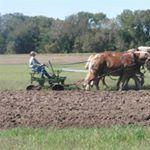
cowboycolonel
-
Posts
242 -
Joined
-
Last visited
Content Type
Profiles
Forums
Events
Blogs
Gallery
Everything posted by cowboycolonel
-
How's the restoration coming?
-

Which one??
-
The one you couldn't get the nail out of the jockey. Big W I think it was. How many do you have working?
-

Hmm, you must be thinking of someone else. Don't recall that one. Have had some Triple T's that have been buggers because they use great big steel ring shanks everywhere. Tears up a lot of leather getting them apart. I've usually got at least one complete restoration in progress, although none right now. Suppose to be one coming in, it's the time of year nobody's too motivated to get their stuff in line. They wait until Feb or March to do that:-) Got 3 new saddle builds going, just finished a team harness, all the usual tack stuff for my one wholesale account. Christmas orders to start on, etc.
-
-
Are you still in Mt Gilead? I always like to check out who is from near my old hometown.
-
I'd like to see your one-ear bridel dye. It isn't the old Visalia pattern is it?
- Show previous comments 3 more
-

Tried loading a couple more but I always have trouble loading more than one, even after reducing the size.
-
Sioux,
Thanks. This looks like an English bridle to me -- not so many cowboys like this style. I appreciate your sharing. The crown and earpiece could work without the overlay, though. Can you click those and cheeks to match?
CC
-

Never seen a one-eared English bridle but the overlay is just for the throatlatch. I have 4 cheek dies. Not sure why this headstall has just a straight cheekpiece all the way down, as I bought my first cheek die at the same time that I got the crown die. But yes, I could click some out. I"ll get pics of the cheek dies. One for sure is for the "blingy" overlay headstalls that a gal makes; she buys the blanks from me. So you probably wouldn't want that one, but I'll get some pics. Just got back from a horse sale late last night after having been gone all week, and have a lot of catching up to do, so it may or may not be today.


